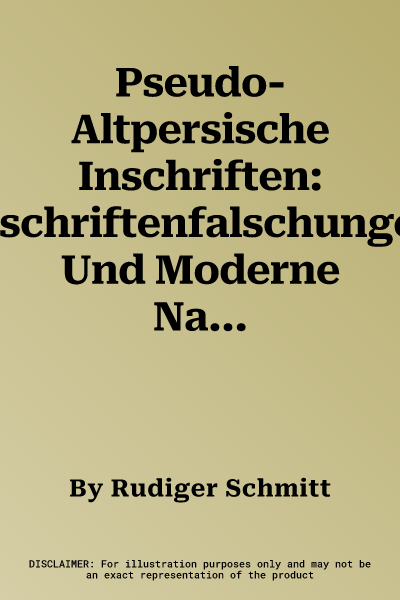Rudiger Schmitt
(Author)Pseudo-Altpersische Inschriften: Inschriftenfalschungen Und Moderne Nachbildungen in Altpersischer KeilschriftPaperback, 22 August 2007

Qty
1
Turbo
Ships in 2 - 3 days
In Stock
Free Delivery
Cash on Delivery
15 Days
Free Returns
Secure Checkout

Part of Series
Veroffentlichungen Zur Iranistik
Part of Series
Sitzungsberichte Der Philosophisch-Historischen Klasse
Print Length
136 pages
Language
German
Publisher
Austrian Academy of Sciences Press
Date Published
22 Aug 2007
ISBN-10
3700139640
ISBN-13
9783700139645
Description
Product Details
Author:
Book Format:
Paperback
Country of Origin:
US
Date Published:
22 August 2007
Genre:
Ancient (To 499 A.D.)
ISBN-10:
3700139640
ISBN-13:
9783700139645
Language:
German
Location:
Vienna
Pages:
136
Publisher: